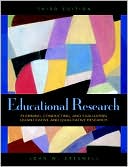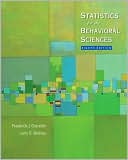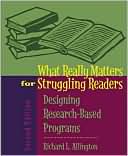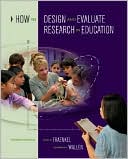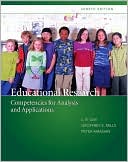Research Methods in Physical Activity
Research Methods in Physical Activity, Sixth Edition, presents an engaging overview of the research process and available methods for students researching within all subdisciplines of kinesiology and exercise science as well as physical therapy, rehabilitation, and occupational therapy. Translated into seven languages and interjected with the humor that has become a welcome component of this internationally recognized text, the sixth edition of Research Methods in Physical Activity also...
Search in google:
Research Methods in Physical Activity, Sixth Edition, presents an engaging overview of the research process and available methods for students researching within all subdisciplines of kinesiology and exercise science as well as physical therapy, rehabilitation, and occupational therapy.
Part I: Overview of the Research ProcessChapter 1: Introduction to Research in Physical Activity The Nature of Research Unscientific Versus Scientific Methods of Problem Solving Alternative Models of Research Types of Research Overview of the Research Process Parts of a Thesis: A Reflection on the Steps in the Research Process SummaryChapter 2: Developing the Problem and Using the Literature Identifying the Research Problem Purpose of the Literature Review Basic Literature Search Strategies Steps in the Literature Search SummaryChapter 3: Presenting the Problem Choosing the Title Writing the Introduction Stating the Research Problem Presenting the Research Hypothesis Operationally Defining Your Terms Basic Assumptions, Delimitations, and Limitations Justifying the Significance of the Study Differences Between the Thesis and the Research Article SummaryChapter 4: Formulating the Method How to Present Methodological Details Why Planning the Method Is Important Two Principles for Planning Experiments Describing Participants Describing Instruments Describing Procedures Describing Design and Analysis Establishing Cause and Effect Interaction of Participants, Measurements, and Treatments SummaryChapter 5: Ethical Issues in Research and Scholarship Seven Areas of Scientific Dishonesty Ethical Issues Regarding Copyright Model for Considering Scientific Misconduct Working With Faculty Protecting Human Participants Protecting Animal Subjects SummaryPart II: Statistical and Measurement Concepts in Research Chapter 6: Becoming Acquainted With Statistical Concepts Why We Need Statistics Use of Computers in Statistical Analysis Description and Inference Are Not Statistical Techniques Ways to Select a Sample Justifying Post Hoc Explanations Difficulty of Random Sampling and Assignment: How Good Does It Have to Be? Unit of Analysis Measures of Central Tendency and Variability Basic Concepts of Statistical Techniques Data for Use in the Remaining Statistical Chapters SummaryChapter 7: Statistical Issues in Research Planning and Evaluation Probability Meaningfulness (Effect Size) Power Using Information in the Context of the Study SummaryChapter 8: Relationships Among Variables What Correlational Research Investigates Understanding the Nature of Correlation What the Coefficient of Correlation Means Using Correlation for Prediction Partial Correlation Uses of Semipartial Correlation Procedures for Multiple Regression Multivariate Forms of Correlation SummaryChapter 9: Differences Among Groups How Statistics Test Differences Types of t Tests Interpreting t Relationship of t and r Analysis of Variance Analysis of Covariance Experimentwise Error Rate Understanding Multivariate Techniques SummaryChapter 10: Nonparametric Techniques Chi Square: Testing the Observed Versus the Expected Procedures for Rank-Order Data Correlation Differences Among Groups SummaryChapter 11: Measuring Research Variables Validity Reliability Methods of Establishing Reliability Intertester Reliability (Objectivity) Standard Error of Measurement Using Standard Scores to Compare Performance Measuring Movement Measuring Written Responses Measuring Affective Behavior Scales for Measuring Affective Behavior Measuring Knowledge Item Response Theory SummaryPart III: Types of Research Chapter 12: Historical Research in Physical Activity Research Paradigms Lines of Inquiry and Topics Designing the Research Working With the Evidence SummaryChapter 13: Philosophic Research in Physical Activity Identifying the Purposes of Philosophic Research Locating a Research Problem Analyzing a Research Problem SummaryChapter 14: Research Synthesis (Meta-Analysis) Using Meta-Analysis to Synthesize Research Presenting Effect Size Data SummaryChapter 15: The Survey Questionnaires Electronic Surveys The Delphi Method Personal Interviews Normative Survey SummaryChapter 16: Other Descriptive Research Methods Developmental Research Case Studies Job Analysis Observational Research Unobtrusive Research Techniques Correlational Research SummaryChapter 17: Physical Activity Epidemiology Research Observational Versus Experimental Research What Is Epidemiology? Physical Activity Measurement Definitions Assessment of Physical Activity Epidemiologic Study Designs Reading and Interpreting a Physical Activity Epidemiologic Study SummaryChapter 18: Experimental and Quasi-Experimental Research Sources of Invalidity Threats to Internal Validity Threats to External Validity Controlling Threats to Internal Validity Controlling Threats to External Validity Types of Designs SummaryChapter 19: Qualitative Research Procedures in Qualitative Research Analysis of the Data Concluding Remarks SummaryChapter 20: Mixed-Methods Research The Scope of Mixed-Methods Research Designing Mixed-Methods Research Specific Issues in Mixed-Methods Research Examples of Mixed-Methods Research SummaryPart IV: Writing the Research ReportChapter 21: Completing the Research Process Research Proposal Developing a Good Introduction Describing the Method The Proposal Process Preparing and Presenting Qualitative Research Proposals Writing Proposals for Granting Agencies Submitting Internal Proposals Completing Your Thesis or Dissertation Results and Discussion Handling Multiple Experiments in a Single Report Using Tables and Figures SummaryChapter 22: Ways of Reporting Research Basic Writing Guidelines A Brief Word About Acknowledgments Thesis and Dissertation Format: Traditional Versus Journal Helpful Hints for Successful Journal Writing Revising Research Papers Writing Abstracts Making Oral and Poster Presentations Summary


